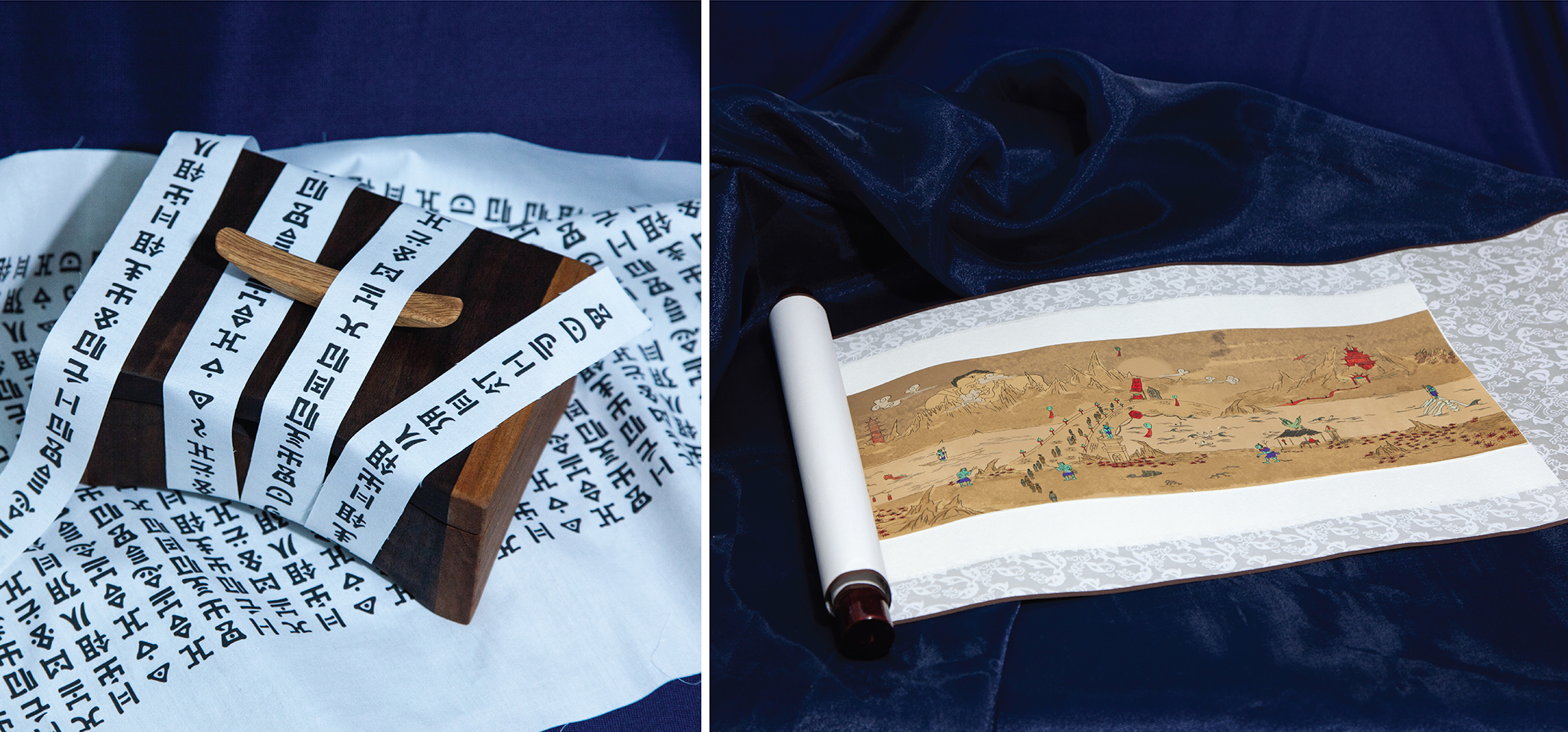Self-expression in Death
Nanjin Li
We have been approaching death since the moment we are born. However, we run from it, play hide and seek, fearfully waiting for the final stop. So does all of society. As the most intimate and universal life experience of humans, death is rarely celebrated and recognized. Instead, this moment of loss has become a medical event, a lucrative business, and, therefore, a source of terror. It turns out that the power of death and dying is often not in our hands. Doctors, funeral directors, our families, determine how we die. Why isn’t us? Why can’t we have death in our own hands? If we have to die, we need to die in the ways we want.
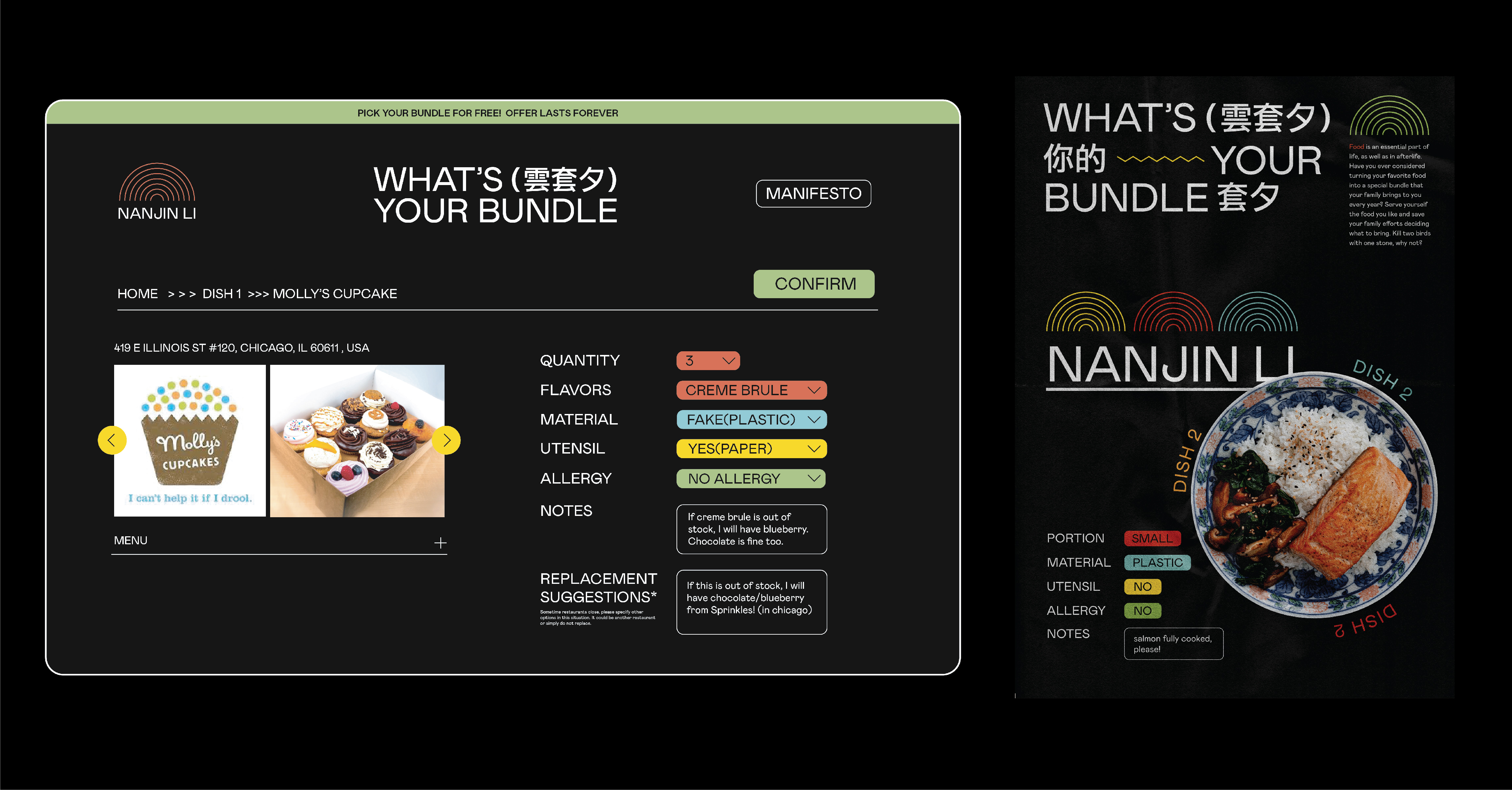
“Five Days After I Die”: Cultural Probe Study
“Five Days After I Die” investigates participants’ perspectives about death in an unexpected way. Six participants with distinct cultural backgrounds were invited to make imaginative stories about after-death time. Each day, they were given a prompt of their future death experiences, from final care routine, memorial-making, gathering, to reborn choices.
“What’s Your Bundle?” : Food as a Form of Self-expression in Death
An imaginative service that offers the living to choose their gravestone food offerings combo. It is inspired by the Chinese ritual that people bring food to the deceased's gravestone to enjoy the afterlife. Food is a natural form of self-expression. If there is an afterlife, don't you want to eat your favorite food as well?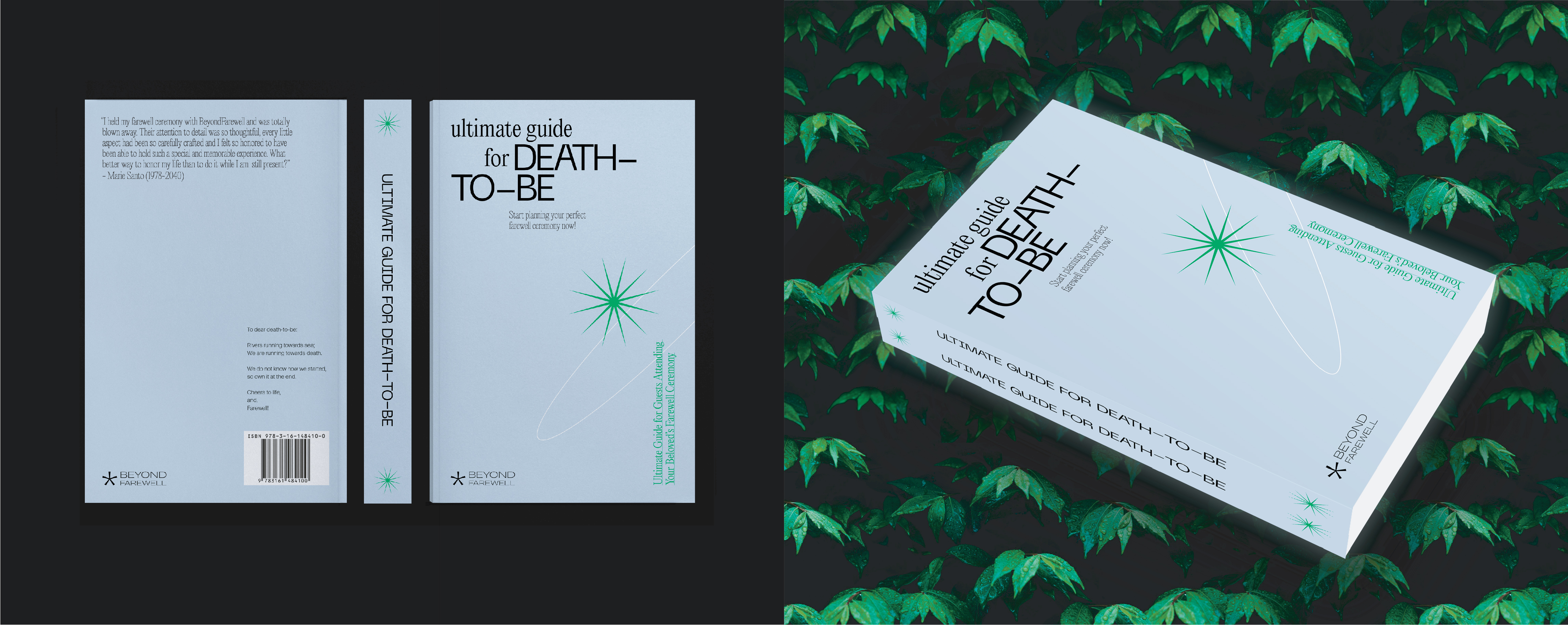
Future of Death: The Death Celebration Industry
The Ultimate Guide for Death-to-be is a speculative farewell celebration planning book. It envisions a future where celebrating death becomes a billion-dollar industry and everyone wants to die "uniquely". However, when self-expression goes to an extreme, we will still die uniformly. What is the balance between self-expression and commercialization?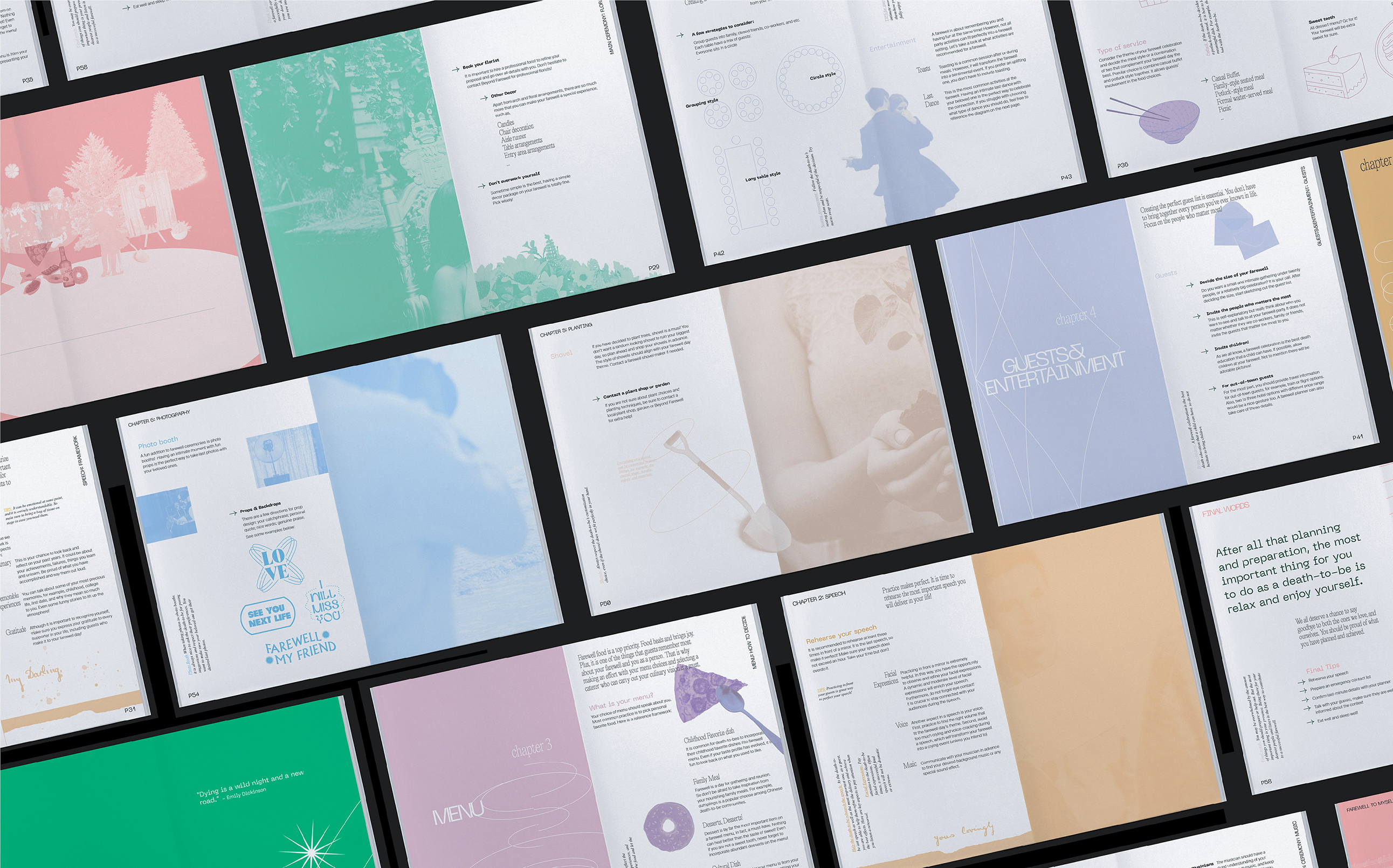
Inside spreads from The Ultimate Guide for Death-to-be
The book contains six chapters, covering every aspect of the perfect farewell ceremony: main ceremony, speech, food, entertainment, planting and photography.
Advertisements inserted inside the book
Throughout the book, readers will find advertisements promoting services needed for a future farewell celebration. Losing the balance of self-expression leads to the commercialization of death and dying.
Capstone Project: The Legend of Nian
The capstone project takes a spin on traditional Chinese death folklore and rituals. This grief ritual allows the living to send a handwritten letter to the deceased. It is an intimate ritual that addresses individuals’ emotional needs. Who needs to burn cheaply-made industrialized papers when you can send a letter?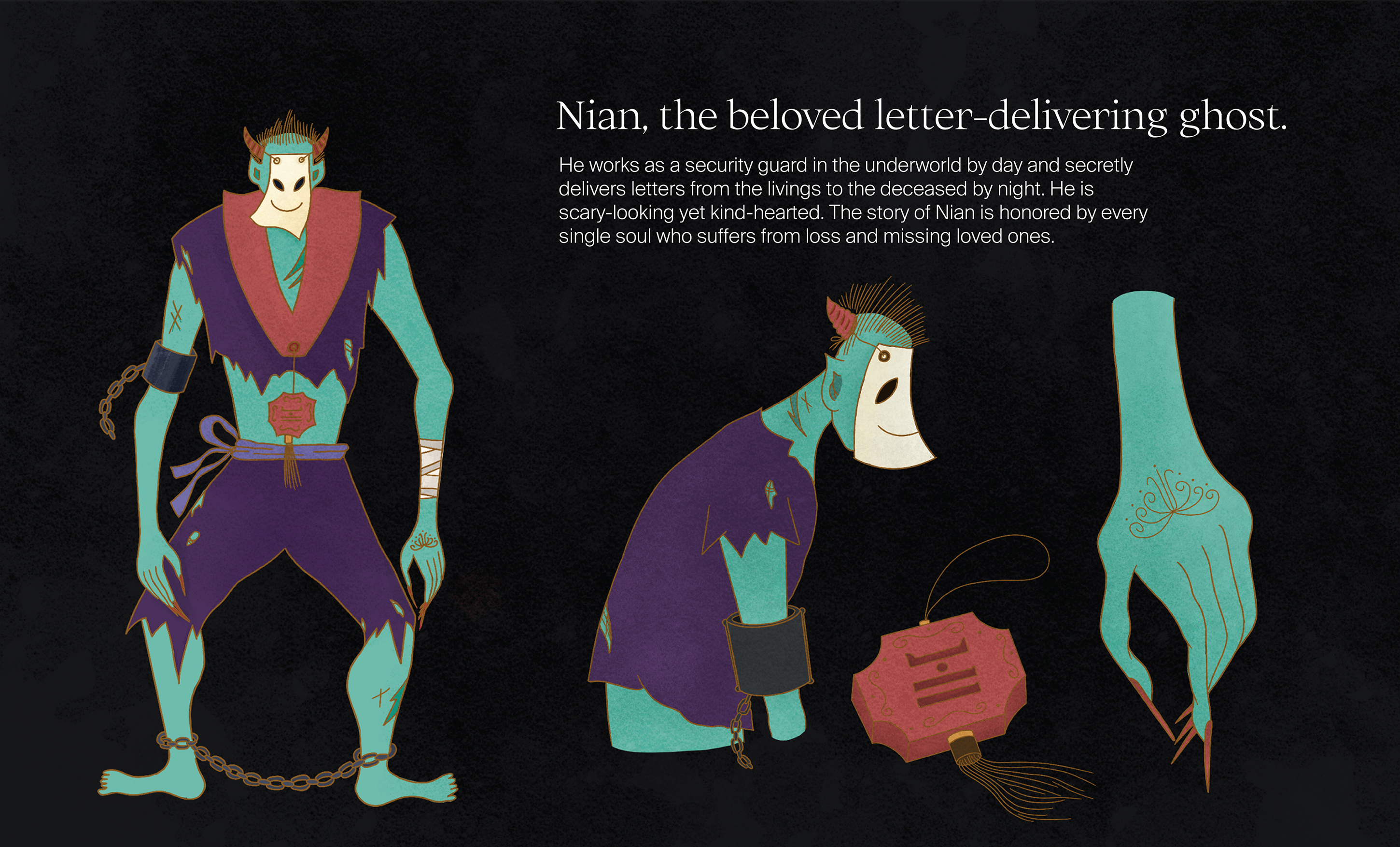
Character Design: Nian, letter-delivering ghost
The letter-delivering ghost named Nian stays at the core of this new ritual and mythology. He is a 9-feet tall, scary-looking ghost with a kind heart. His physical characteristics design are inspired by traditional Chinese death culture and folklore.
Performing the Ritual: The mailbox
The mailbox is essential to the ritual. After the letter is written, one shall seal the letter inside the envelope with a special stamp, put it back inside the box, and turn the needle away. When the needle returns, it indicates that Nian has picked up the letter.
Stamps and Paper Charms
This ritual requires special stamps from the underworld to contain the letters. Sometimes, people use these yellow paper charms for blessings and appreciation of Nian’s efforts.